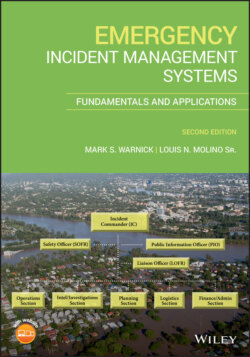Читать книгу Emergency Incident Management Systems - Mark Warnick S., Louis N. Molino Sr - Страница 36
1.8 The “Big Three” of IMS
ОглавлениеLack of nationwide collaboration to meet the needs of incident command and incident management needs initially led to three initial manifestations of IMS. Each manifestation played a pivotal role in creating the method widely used today. These three methods were a part of disorganized groups that became known as part of the “Big Three” command methods. Each of these three methods contributed in some way to the evolution of the ICS component of NIMS, and to NIMS itself. Later Incident Command System models were extensions of these three methods. The Big Three include
FIRESCOPE (also known as the Wildfire Incident Command System): FIRESCOPE evolved into a method that was used mostly by the wildland firefighting system in the United States. During 1970s and early 1980s, it was the most prevalent ICS Method in place. The FIRESCOPE program is still (somewhat) in use today in California, but it has seen a substantial decline in use since ICS and NIMS became the nationwide standard.
The National Fire Academy (NFA) Incident Command System (ICS): The Federal government recognized ICS as the model for the management of emergency incident scene in 1980. This version of ICS was slightly geared toward the “east coast” because it did not initially embrace wildland firefighting applications, and for the most part, it addressed emergencies faced by urban responders. In 1980s through early 2000s, these NFA‐ICS classes were a mainstay of NFA delivery classes to local jurisdictions.
The Fire Ground Commander System (FGCS): The FGCS was established in the Phoenix Fire Department and gained ground as a method partially because of their well‐known Chief, Alan Brunacini. This method used the same basic, or underlying, principles as the FIRESCOPE model but was made to be more practical for structural fire‐based incidents.
These three methods would later meld in together into the NIMS method that is in place today, with ICS being a primary component of NIMS. The melding of the three methods was due, at least in part, to the 9/11 attacks on American soil. Some would argue that the differences in the big three are only semantic in nature, but each played a respective role in the creation of what we now call ICS and NIMS.
